Webinar on Liquidation of Ukrainian Greek Catholic Church Held
Monday, 13 December 2010, 22:22 In a webinar on the 1946 liquidation of the Ukrainian Greek Catholic Church, Father Taras Bublyk, researcher at the Institute of History of the Church of UCU, said the Soviet authority did not intend to coexist with the Greek Catholic Church because it considered the church part of the anti-Soviet system.
According to Fr. Taras, in September 1939 the Greek Catholic Church represented a very strong structure, which included the Lviv Archeparchy, Stanislav and Peremyshliany dioceses, and the apostolic administration in Lemkivshchyna...
In a webinar on the 1946 liquidation of the Ukrainian Greek Catholic Church, Father Taras Bublyk, researcher at the Institute of History of the Church of UCU, said the Soviet authority did not intend to coexist with the Greek Catholic Church because it considered the church part of the anti-Soviet system.
According to Fr. Taras, in September 1939 the Greek Catholic Church represented a very strong structure, which included the Lviv Archeparchy, Stanislav and Peremyshliany dioceses, and the apostolic administration in Lemkivshchyna...
 In a webinar on the 1946 liquidation of the Ukrainian Greek Catholic Church, Father Taras Bublyk, researcher at the Institute of History of the Church of UCU, said the Soviet authority did not intend to coexist with the Greek Catholic Church because it considered the church part of the anti-Soviet system.
According to Fr. Taras, in September 1939 the Greek Catholic Church represented a very strong structure, which included the Lviv Archeparchy, Stanislav and Peremyshliany dioceses, and the apostolic administration in Lemkivshchyna. The church had 2,387 parishes and 3.6 million faithful. It had 2,352 diocesan priests, 31 male and 121 female monasteries and monastic houses, theological academy and 3 seminaries with a total of 480 students.
Despite severe persecution of the church during the first Soviet occupation in 1939-1941, when the Soviet regime regained power in 1944 Metropolitan Andrey Sheptytsky, seeing a change in Joseph Stalin’s attitude to the Russian Orthodox Church, sought to establish constructive relations with the authorities. After the death of the metropolitan, his successor, Patriarch Joseph, continued to work on the relationship.
As a result, in 1944–1945 the leaders issued two pastoral letters urging to stop the armed struggle and the church collected 100 thousand rubles for the needs of the Red Cross and sent an official delegation to Moscow. Instead, the Soviet authority unleashed an information war against the church, and on April 11, 1945, it arrested the head of the church along with the entire episcopate, established a work group on "reunifying" the Church with the Russian Orthodox Church, and in March 1946 held a pseudo-synod liquidating the Greek Catholic Church.
Fr. Taras said that the priests were brought to the city by force under a police escort and in complete secrecy. "Since the synod was convened by arbitrarily chosen priests who were no longer Greek Catholics, the event cannot be considered canonical, and its resolution not legitimate," said Fr. Taras.
The webinar can be viewed at the following link: www.ugcc.org.ua/webinars/2010-12-08.flv (50:03 min., 30 Mb).
In a webinar on the 1946 liquidation of the Ukrainian Greek Catholic Church, Father Taras Bublyk, researcher at the Institute of History of the Church of UCU, said the Soviet authority did not intend to coexist with the Greek Catholic Church because it considered the church part of the anti-Soviet system.
According to Fr. Taras, in September 1939 the Greek Catholic Church represented a very strong structure, which included the Lviv Archeparchy, Stanislav and Peremyshliany dioceses, and the apostolic administration in Lemkivshchyna. The church had 2,387 parishes and 3.6 million faithful. It had 2,352 diocesan priests, 31 male and 121 female monasteries and monastic houses, theological academy and 3 seminaries with a total of 480 students.
Despite severe persecution of the church during the first Soviet occupation in 1939-1941, when the Soviet regime regained power in 1944 Metropolitan Andrey Sheptytsky, seeing a change in Joseph Stalin’s attitude to the Russian Orthodox Church, sought to establish constructive relations with the authorities. After the death of the metropolitan, his successor, Patriarch Joseph, continued to work on the relationship.
As a result, in 1944–1945 the leaders issued two pastoral letters urging to stop the armed struggle and the church collected 100 thousand rubles for the needs of the Red Cross and sent an official delegation to Moscow. Instead, the Soviet authority unleashed an information war against the church, and on April 11, 1945, it arrested the head of the church along with the entire episcopate, established a work group on "reunifying" the Church with the Russian Orthodox Church, and in March 1946 held a pseudo-synod liquidating the Greek Catholic Church.
Fr. Taras said that the priests were brought to the city by force under a police escort and in complete secrecy. "Since the synod was convened by arbitrarily chosen priests who were no longer Greek Catholics, the event cannot be considered canonical, and its resolution not legitimate," said Fr. Taras.
The webinar can be viewed at the following link: www.ugcc.org.ua/webinars/2010-12-08.flv (50:03 min., 30 Mb).
Information Department of the UGCC
LATEST NEWS
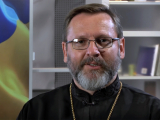
We can imagine what the prayer of the prisoners in the Russian torture centers in the Ukrainian Kharkiv region was like – Head of the UGCC on the 206th day of the war 17 September
A vast cemetery, a mass burial, was found near the city of Izyum, in which more than 400 innocently killed and tortured people have already been...
-
 Глава УГКЦ у 158-й день війни: «Нехай Господь прийме з уст нашої Церкви псалми та моління за всіх тих, які особливо просять нашої молитви»
Глава УГКЦ у 158-й день війни: «Нехай Господь прийме з уст нашої Церкви псалми та моління за всіх тих, які особливо просять нашої молитви»
-
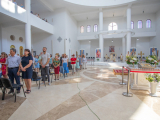 «Сила, яка походить із вірності Христові, є стержнем, який ніхто не може зламати», – Блаженніший Святослав
«Сила, яка походить із вірності Христові, є стержнем, який ніхто не може зламати», – Блаженніший Святослав
-
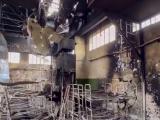 Глава УГКЦ у 157-й день війни: «В ім’я Боже ми засуджуємо звірства в Оленівці і світ повинен це засудити як особливий вияв дикості й жорстокості»
Глава УГКЦ у 157-й день війни: «В ім’я Боже ми засуджуємо звірства в Оленівці і світ повинен це засудити як особливий вияв дикості й жорстокості»
-
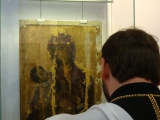 «Боже, почуй наш плач і поспіши нам на допомогу і порятунок!», – Глава УГКЦ у 156-й день війни
«Боже, почуй наш плач і поспіши нам на допомогу і порятунок!», – Глава УГКЦ у 156-й день війни
-
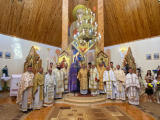 «Бог йому дав серце і душу українського народу»: відбулася щорічна проща до Прилбичів з нагоди уродин митрополита Андрея Шептицького
«Бог йому дав серце і душу українського народу»: відбулася щорічна проща до Прилбичів з нагоди уродин митрополита Андрея Шептицького
-
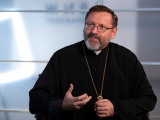 Глава УГКЦ: «Я горджуся українськими патріотами, які без найменшої краплі ненависті готові захищати своє»
Глава УГКЦ: «Я горджуся українськими патріотами, які без найменшої краплі ненависті готові захищати своє»
-
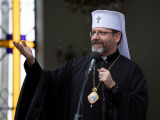 Блаженніший Святослав закликав українську молодь скласти присягу на вірність Христові
Блаженніший Святослав закликав українську молодь скласти присягу на вірність Христові
-
 Глава УГКЦ у 155-й день війни: «Помолімося, щоб не втратити скарбу віри князя Володимира»
Глава УГКЦ у 155-й день війни: «Помолімося, щоб не втратити скарбу віри князя Володимира»
-
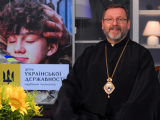 Блаженніший Святослав у День державності України: «Наша Держава – це для нас питання життя або смерті»
Блаженніший Святослав у День державності України: «Наша Держава – це для нас питання життя або смерті»
-
 Глава УГКЦ у 154-й день війни: «Нехай Господь Бог прийме у свої вічні обійми журналістів, які віддали за правду своє життя в Україні»
Глава УГКЦ у 154-й день війни: «Нехай Господь Бог прийме у свої вічні обійми журналістів, які віддали за правду своє життя в Україні»
-
 Глава УГКЦ у 153-й день війни: «Принесімо наш біль перед Боже обличчя і будьмо певні, що Він нас вислухає»
Глава УГКЦ у 153-й день війни: «Принесімо наш біль перед Боже обличчя і будьмо певні, що Він нас вислухає»
-
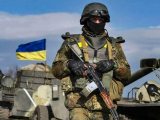 Глава УГКЦ у 152-й день війни: «Помолімся молитву заступництва за наших воїнів»
Глава УГКЦ у 152-й день війни: «Помолімся молитву заступництва за наших воїнів»
-
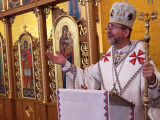 «Віруюча людина не може бути байдужою, коли бачить страждання іншої людини», – владика Богдан Дзюрах
«Віруюча людина не може бути байдужою, коли бачить страждання іншої людини», – владика Богдан Дзюрах
-
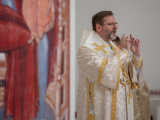 «Серед нашого страждання творімо простір для прояву Божої всемогутності», – Глава УГКЦ у 6-ту неділю після П’ятдесятниці
«Серед нашого страждання творімо простір для прояву Божої всемогутності», – Глава УГКЦ у 6-ту неділю після П’ятдесятниці
-
 Глава УГКЦ у 151-й день війни: «Російське віроломство ми перемагаємо силою любові до нашої Батьківщини»
Глава УГКЦ у 151-й день війни: «Російське віроломство ми перемагаємо силою любові до нашої Батьківщини»

